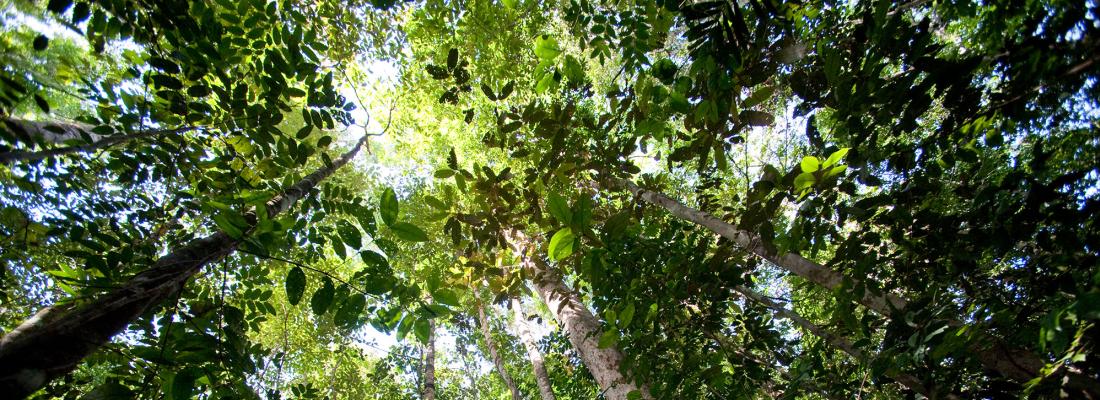Climate change and risks Reading time 3 min
Plants might be able to absorb more CO2 from human activities than previously expected
Published on 20 November 2023

Despite this headline finding, the environmental scientists behind the research are quick to underscore that this should in no way be taken to mean the world’s governments can take their foot off the brake in their obligations to reduce carbon emissions as fast as possible. Simply planting more trees and protecting existing vegetation is not a silver-bullet solution but the research does highlight the multiple benefits to conserving such vegetation.
“Plants take up a substantial amount of carbon dioxide (CO2) every year, thereby slowing down the detrimental effects of climate change, but the extent to which they will continue this CO2 uptake into the future has been uncertain,” explains Dr Jürgen Knauer, who headed the research team led by Western Sydney University.
“What we found is that a well-established climate model that is used to feed into global climate assessments by the likes of the IPCC predicts stronger and sustained carbon uptake until the end of the 21st century when extended to account for the impact of some critical physiological processes that govern how plants conduct photosynthesis.
“We accounted for aspects like how efficiently carbon dioxide can move through the interior of the leaf, how plants adjust to changes in temperatures, and how plants most economically distribute nutrients in their canopy. These are three really important plant response mechanisms that affect a plant’s ability to ‘fix’ carbon, yet they are commonly ignored in most global models” said Dr Knauer.
Photosynthesis is the scientific term for the process in which plants use the sun’s energy to convert – or “fix” – CO2 into the sugars they use for growth and metabolism. This carbon fixing serves as a natural climate change mitigator by mopping up some of the additional carbon dioxide deposited in the atmosphere by fossil fuel emissions. Plants and ecosystems store some of the additional carbon they take up in long-term pools such as the wood of growing trees, and slow-decomposing organic matter in the soil. In this way, increased uptake of CO2 by vegetation can lead to an increasing land carbon sink, and indeed, this has been reported by researchers over the last few decades.
However, the beneficial effect of climate change on vegetation carbon uptake might not last forever and it has long been unclear how vegetation will respond to CO2, temperature and changes in rainfall that are significantly different from what is observed today. Scientists have suggested that more frequent and severe climatic extremes, such as more intense droughts and severe heat, could significantly weaken the sink capacity of terrestrial ecosystems.
In the study published this week, Knauer and colleagues present results from their modelling study set to assess a high-emission climate scenario, to test how vegetation carbon uptake can be expected to respond to global climate change up to the end of the 21st century.
The authors tested different versions of the model that varied in complexity and realism in terms of how plant physiological processes are accounted for. The simplest version ignored the three critical physiological mechanisms associated with photosynthesis while the most complex version accounted for all three mechanisms.
The results were clear: the more complex model set-up that better reflected the latest plant physiological understanding consistently projected stronger increases of vegetation carbon uptake globally. The processes accounted for reinforced each other, so that effects were even stronger when accounted for in combination.
Matthias Cuntz, research director of INRAE, and Prof Ben Smith, Research Director of WSU’s Hawkesbury Institute for the Environment, were involved in the study. Commenting on the wider relevance of the findings, they said:
“Our understanding of key response processes of the carbon cycle, such as plant photosynthesis, have advanced dramatically in recent years. It always takes a while for new knowledge to make it into the sophisticated models we rely on to inform climate and emissions policy. Our study demonstrates that more fully accounting for the latest science in these models can lead to materially different predictions. Our findings are likely to be impactful, inspiring other teams to update their models in order to verify whether the tendency we observe towards a larger future land sink is replicated by other models. Only when a representative suite of global models agree on a key trend or pattern, do we rely on that trend or pattern to guide policy.
“These kinds of predictions have implications for nature-based solutions such as revegetation as one tool among a portfolio of approaches that will be needed to reach net zero. Our findings suggest these approaches could have a larger impact in mitigating climate change and over a longer time period than we previously thought.”
Reference
Knauer J., Cuntz M., Smith B. et al. (2023). Higher global gross primary productivity under future climate with more advanced representations of photosynthesis. Sci. Adv., 46 (9),eadh9444(2023). DOI:10.1126/sciadv.adh9444
